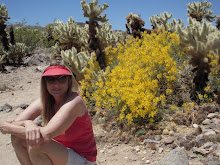
 In 1925, on a winter morning in the Southern California high desert, Johnny Lang rolled up his sleeping bag and packed what remained of his supplies--a half-slice of bacon and a small sack of flour. He'd have to hoof it from his mining site in the Keys View area of what is now Joshua Tree National Park, hoping to catch a freight wagon into Banning, 60 miles away. Gone were his burros. He'd eaten them one by one.
In 1925, on a winter morning in the Southern California high desert, Johnny Lang rolled up his sleeping bag and packed what remained of his supplies--a half-slice of bacon and a small sack of flour. He'd have to hoof it from his mining site in the Keys View area of what is now Joshua Tree National Park, hoping to catch a freight wagon into Banning, 60 miles away. Gone were his burros. He'd eaten them one by one.The 75-year-old prospector slung his gear over his shoulder and tacked a note, dated January 25th, to the ramshackle hut that was his home: Gone for grub. Be back soon.
Three months later, while pioneer rancher Bill Keys and two companions were building the road to Keys View, they came upon Lang's mummified body. The burnt remnants of a nearby bush and the thin sleeping bag Lang was wrapped in suggested that the old miner had died when he stopped to make camp.
During the California Gold Rush of 1849, miners bypassed the Southern California deserts in their hurry to get to "gold country." It was not until a decade later that prospectors began to explore the high desert area that is now Joshua Tree National Park. As mines were staked, miners set up camps and built ore-crushing mills near the sites to process their treasure.
Over the years, thousands of miners came and went. Many abandoned their excavations because of the lack of transportation and scarcity of water. By contrast, the nearby city of Twentynine Palms grew up and thrived because of its proximity to the Oasis of Mara. As one of his many exploits, Johnny Lang founded the city's first saloon.
"Johnny Lang is a part of the colorful history of the area, and of the park," says Laureen Lentz, a longtime resident of Twentynine Palms, and since 1992, a ranger at Joshua Tree National Park. "Lang," she says, "is one of the area's more romantic figures."
Born in Texas in 1850, Johnny Lang worked as a cattle rancher. In the 1890s, he and his father moved west with their grazing herds. Soon after, the pair caught gold fever. They gave up their cows to search for the elusive yellow rocks. Eventually, Lang's efforts paid off.
The Lost Horse Mine was the area's most successful mine. Most of the gold the Lost Horse would ever produce--9,000 troy ounces--was extracted during the first ten years of operation, at the turn of the 20th century. Johnny Lang figures in every version of the mine's discovery, the common factor being that the legendary prospector came across the mine while in pursuit of his wandering horse.
Next: What does Johnny Lang have to do with a stockpile of missing gold?
(photos: Johnny Lang, Lost Horse Mine trail in Joshua Tree National Park)

No comments:
Post a Comment